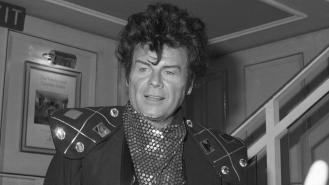
The figure skater and the hitman: The Tonya Harding scandal
Tonya Harding was the first woman to complete the three-and-a-half revolution jump, also known as the triple axel, the first woman to execute three triple axels in a single competition, and the first to ever complete a triple axel in combination. Despite her many accomplishments, Harding is arguably most known for the violent controversy she was embroiled in just before the 1994 U.S. Figure Skating Championship.
It was 6th January 1994, and Nancy Kerrigan had been attending skating practice at the Detroit Cobo Arena. She was preparing to defend her title at the U.S. Figure Skating Championship, which was scheduled for two days later. Kerrigan was known as one of the most elegant figure skaters in the business and often donned costumes designed by Vera Wang. (Pittsburgh Post-Gazette, 5 January 1994 – ‘Kerrigan Skates for Redemption After Tumble’)
She was preparing to compete against Tonya Harding, who was harshly described as “a truck-stop waitress among princesses” by The Miami Herald. She had a blue-collar upbringing in Portland, Oregon, and was very open about her turbulent life, which made her stand out among the prestigious figure skating establishment.
Kerrigan and Harding had competed before, in the 1992 Winter Olympics, where Kerrigan beat Harding to the bronze medal.
Harding had been the product of an alcoholic and dysfunctional family who struggled to make ends meet. (The Dallas Morning News, 6 January 1994 – ‘Ice Dancer Endures a Bad Break at Trials’) As The Miami Herald read: “But fans love the 5-foot-1 underdog who has overcome financial hardship, asthma, a rocky marriage, and death threats.” (The Miami Herald, 6 January 1994 – ‘Rebel on Ice’)
The death threats had led to Harding employing a security service while in Detroit, but the world would soon come to discover it was Kerrigan who needed the protection instead.
After practice was finished, Kerrigan came off the ice and started to head towards the dressing room. As she was walking down a curtained corridor just off the rink, a man came up behind her. He was armed with an ASP telescopic baton. He raised the weapon above his head and slammed it across Kerrigan’s upper right leg. He then turned around and fled from the scene, smashing a window in the process. (The Mercury News, 6 January 1994 – ‘Skater Kerrigan Attacked’)
The aftermath of the attack was captured on camera and broadcast to the world; a reporter had been videotaping Kerrigan’s practice. She was able to walk to a car with the help of her father and was transported to hospital for an X-ray and further examination. (UPI, 6 January 1994 – ‘Kerrigan Attacked at Practice’)
It was determined that the blow had seriously injured Kerrigan’s knee and her quadriceps tendon. The injury severely impeded her jumping and landing ability, meaning that she was forced to withdraw from the U.S. Championship.
Kerrigan spoke with ABC News: "It was one bad guy. I'm sure there are others because there have been other attacks, but most people are worried about me and wondering what happened, so I want to tell them I'm OK. There's more important things than skating. If I can't skate, I'll deal with it. But it could have been a lot worse." (USA Today, 6 January 1994 – ‘Skating Champ Kerrigan Attacked’)
The attacker was described as a white male, between 35 to 40-years-old, and standing at around 6 feet to 6 feet 2 inches tall. He was clean-shaven and wearing a dark three-quarter length leather coat, tan pants, and a dark leather cap.
Meanwhile, Harding won the U.S. Championship just two days after the attack took out her closest rival.
Days later, it was revealed that the FBI was investigating whether Harding’s husband, Jeff Gillooly, and her bodyguard, Shawn Eric Eckardt, had arranged the attack. They both strongly denied the allegations, with Gillooly telling The Oregonian: “I wouldn’t do that. I have more faith in my wife than to bump off her competition.”
Harding and Gillooly had married when Harding was 19-years-old, much to the dismay of her parents. The couple later filed for divorce and Harding obtained a restraining order. The couple eventually reconciled.
According to neighbours, however, the marriage was less than harmonious; loud arguments could often be heard emanating from their home as well as shots from Harding’s rifle. A keen hunter, she had been taught to shoot when she was just 5-years-old.
The tip that led investigators to Gillooly and Eckardt had come from Eugene C. Saunders, a minister from Portland. He told investigators that he had listened to a tape recording of the pair planning to seriously harm Kerrigan with the assistance of a third man, who they referred to as a “hitman” from Arizona. (Daily Breeze, 12 January 1994 – ‘Skater’s Husband, Bodyguard Under Investigation in Attack’)
At one point in the recording, a man could be heard asking: “Why don’t we just kill her?” The reply was: “We don’t need to kill her. Let’s just hit her in the knee.” Saunders identified two of the men on the tape as Gillooly and Eckhardt. (Akron Beacon Journal, 13 January 1994 – ‘Skater’s Guard Confesses’)
While they both initially denied any involvement in the attack, Eckhardt came clean just days later. It was uncovered that Shane Stant, the mysterious hitman, had been paid $6,500 by Gillooly and Eckhardt to attack Kerrigan. His getaway driver was his nephew, Derrick Smith. Eckhardt implicated Harding in the attack, stating that she was involved in the planning and the cover-up. (The Tampa Tribune, 15 January 1994 – ‘Bodyguard Implicates Harding’)
The purpose of the plot was to knock Kerrigan out of the U.S. Championship so that Harding would win, receive millions of dollars in endorsements, and have a better chance at the 1994 Winter Olympics, which were taking place in less than two months. The attack followed a failed attempt in Boston, which had been prevented by bad weather.
Harding eventually admitted to withholding information from police during the investigation. She pleaded guilty to conspiracy to hinder prosecution. She was banned for life from the U.S. Figure Skating Association as well as the U.S. Championships. She was additionally ordered to pay a fine of $160,000, serve 500 hours of community service, and handed three years’ probation.
Gillooly and Eckhardt pleaded guilty to racketeering while Stant and Smith pleaded guilty to conspiracy to commit second-degree assault. Gillooly was sentenced to two years in prison while Eckhardt, Standt, and Smith received 18 month terms. However, Eckhardt was released four months early. (Los Angeles Times, 17 May 1994 – ‘2 Sentenced in Assault on Kerrigan’)
While Harding had been banned from the U.S. Figure Skating Association, she was allowed to compete in the 1994 Winter Olympics. She went up against Kerrigan; finishing in eighth place while Kerrigan won a silver medal. In 2017, Kerrigan was asked if she ever received an apology from Harding. She responded: “Not a direct… does it matter at this point?” (ABC News, 25 April 2017 – ‘Nancy Kerrigan Says She Never Got a Direct Apology from Tonya Harding’)








